So as a recap, first she was unwrapped:
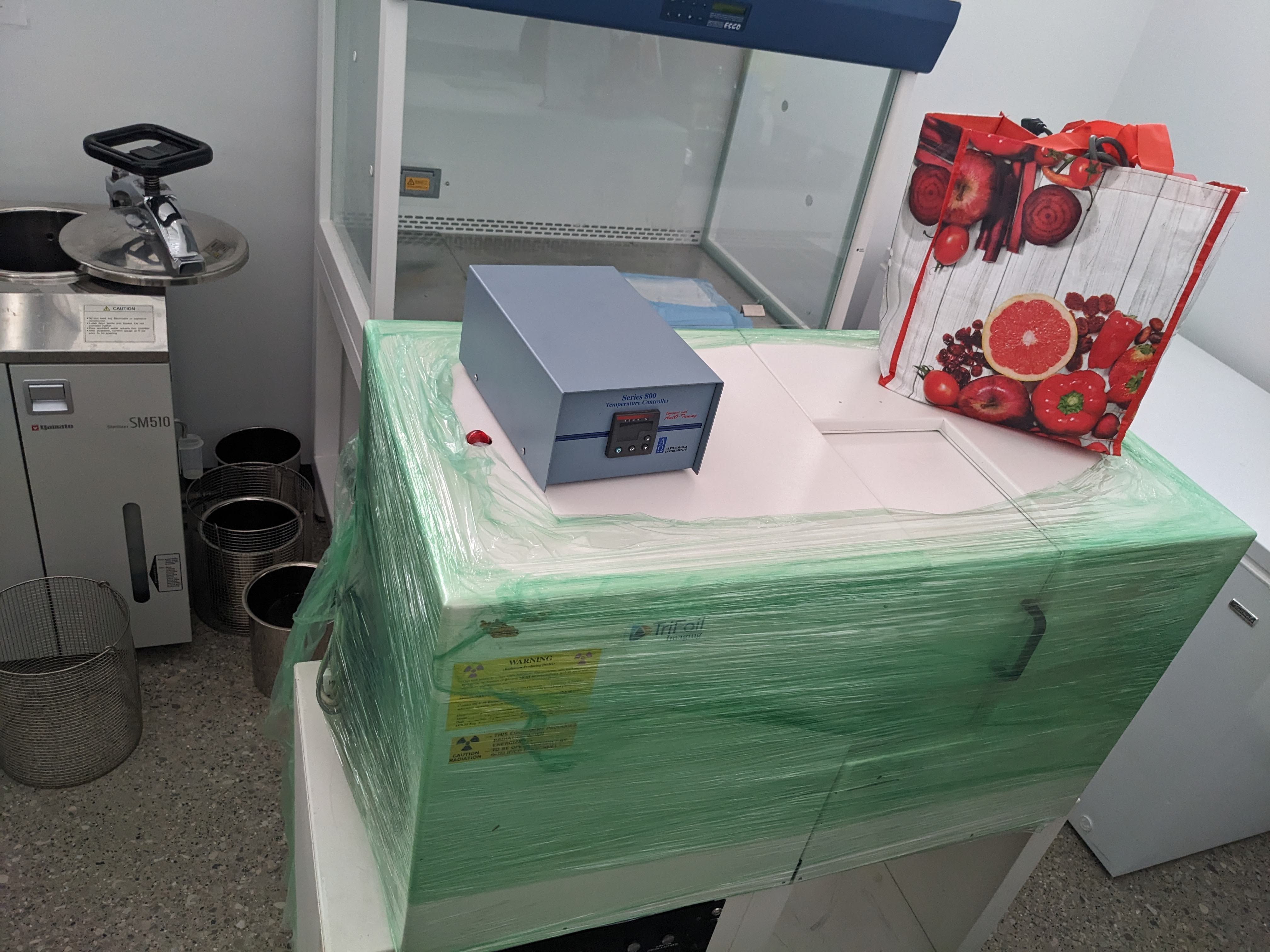
Then it turned out there was an extra 2-part 'bonus' case:
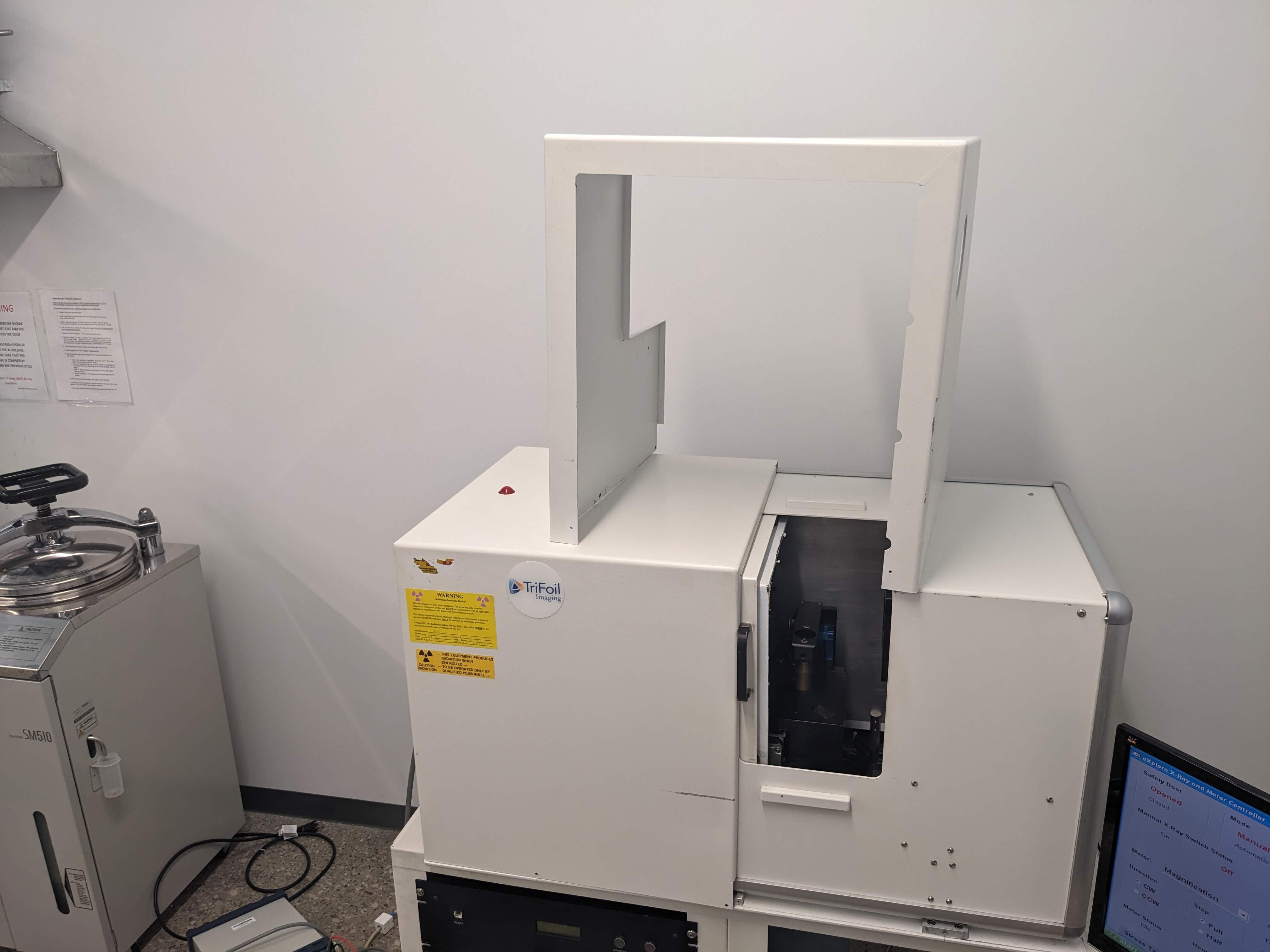
Underneath which was the handsome original case:
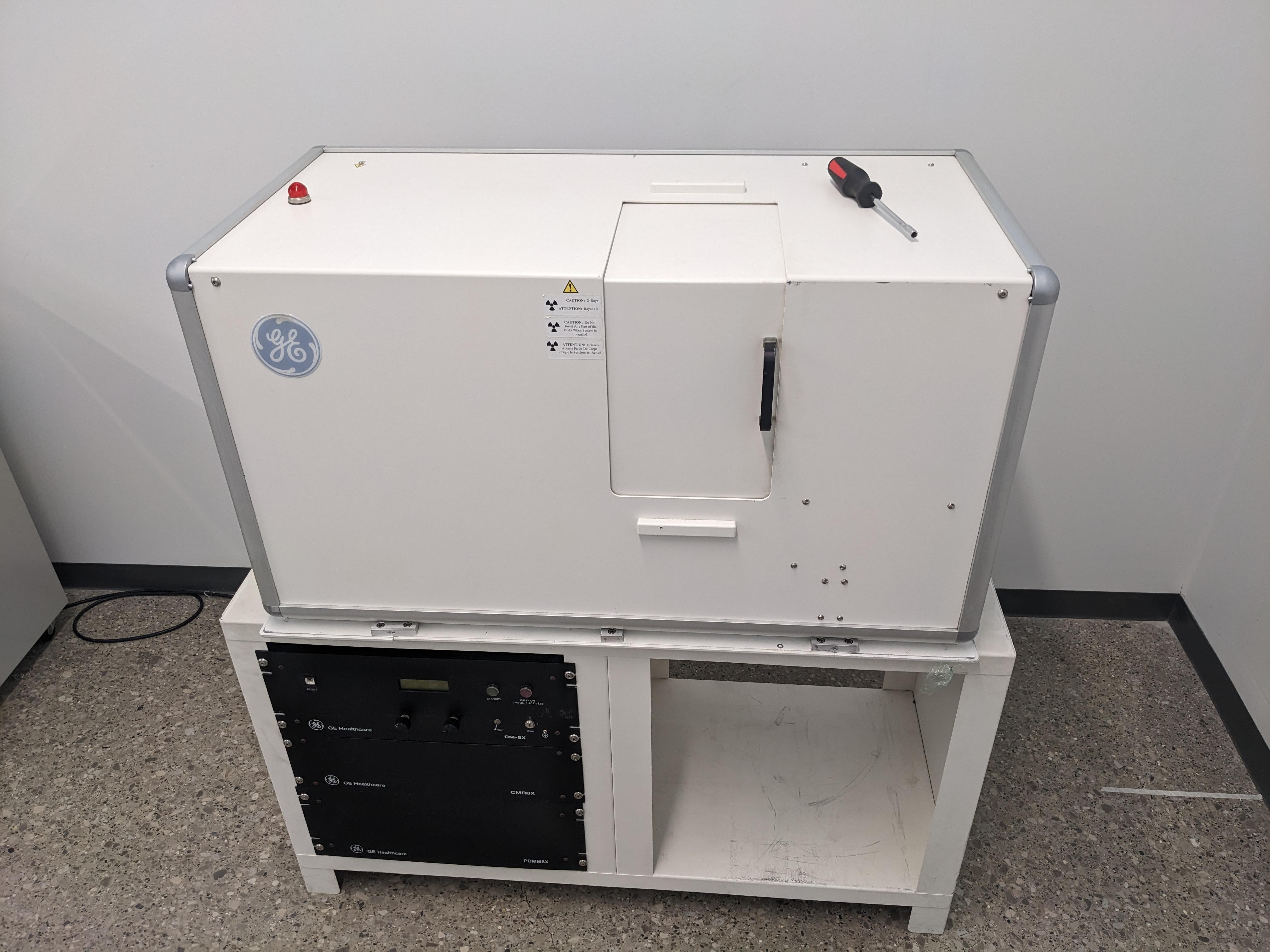
About 50 pounds of side panels and 100+ pounds of main case comes off:
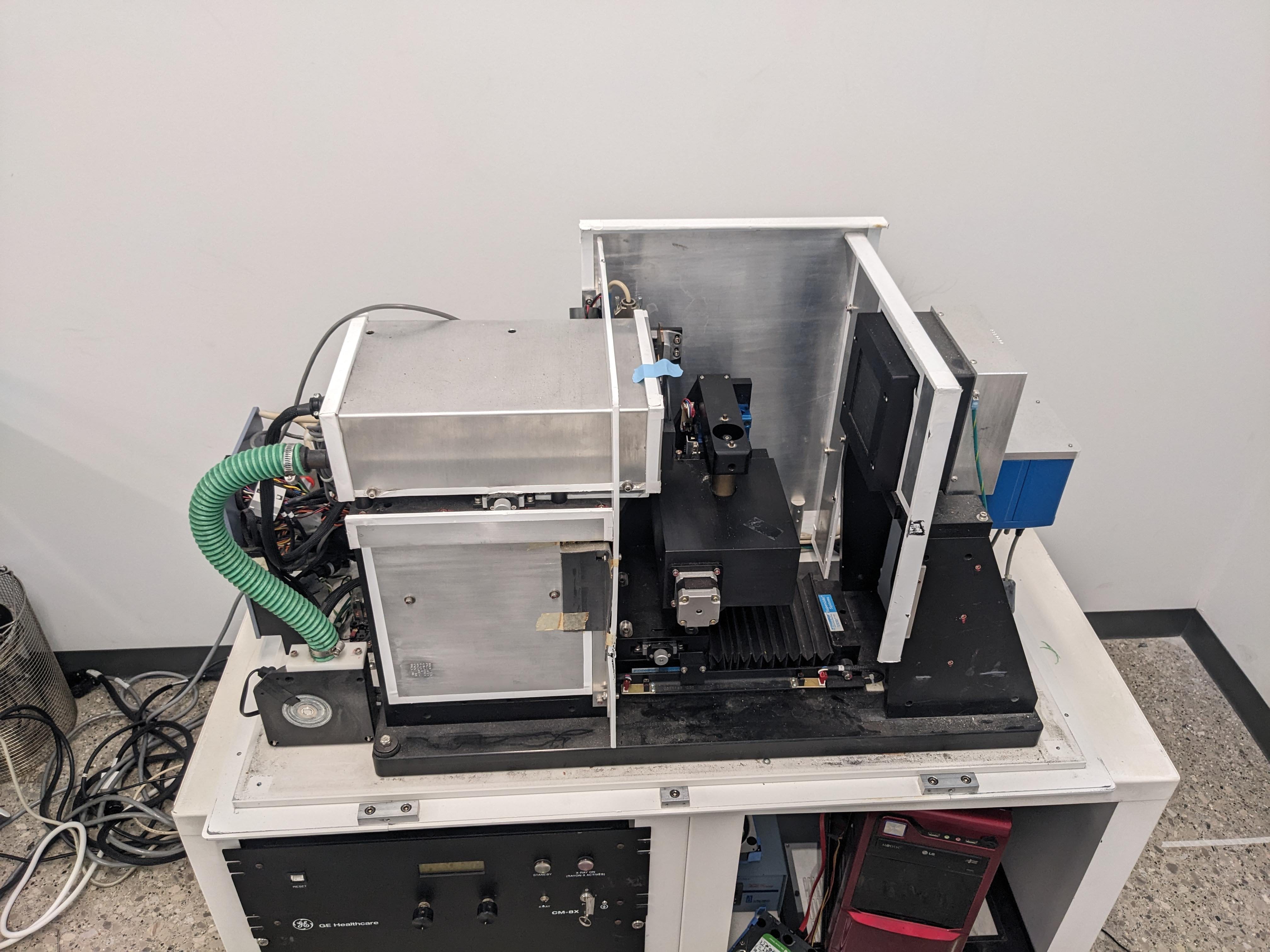
And then, off comes 40 pound lead back shielding panel, lead left shielding panel, Filter wheel, lead source front shielding panel, lead source back shielding panel, and finally, the lead cover over the source.
And we get to the source.
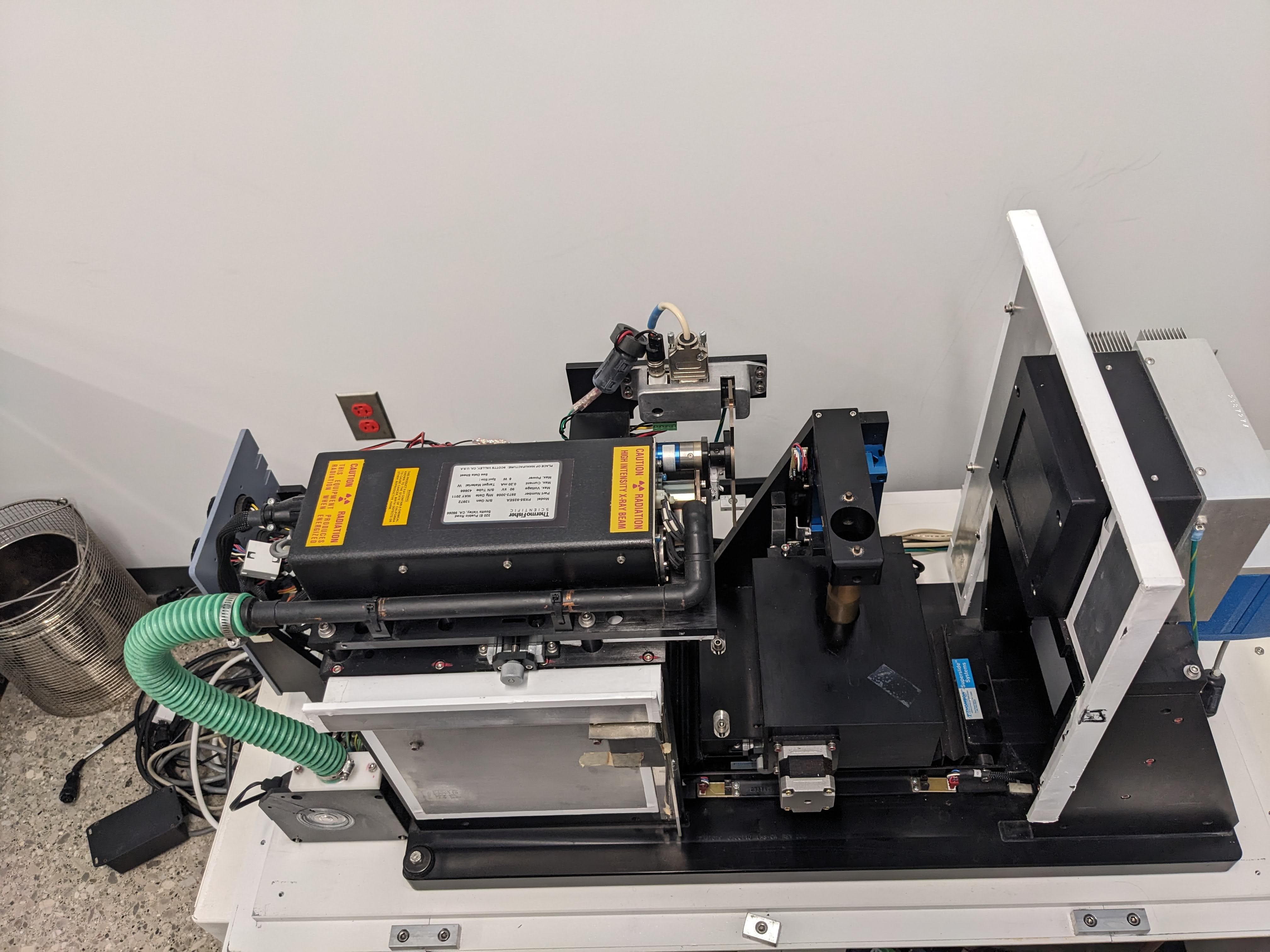
Look how far we've come (and removed) from this machine. But here is it --- pretty much everything we've taken off, and the machine would still work. It would not be good for fragile human beings, but it would work. Everything that's left, though --- apart from another jillion little panels of lead shielding --- is essential.
Especially the source.

There she is, and what first surprised me was the manufactured 2011. That and confusion as it whether it is thermo-electron, thermo-kevex, or thermo-fisher scientific. I may honestly just go visit that address the next time I am in the area, and find out for myself.
Something weird is the cooling pipe, which faces at the general vicinity of the output and not (as I would expect) fit into some kind of opening on the source shell.
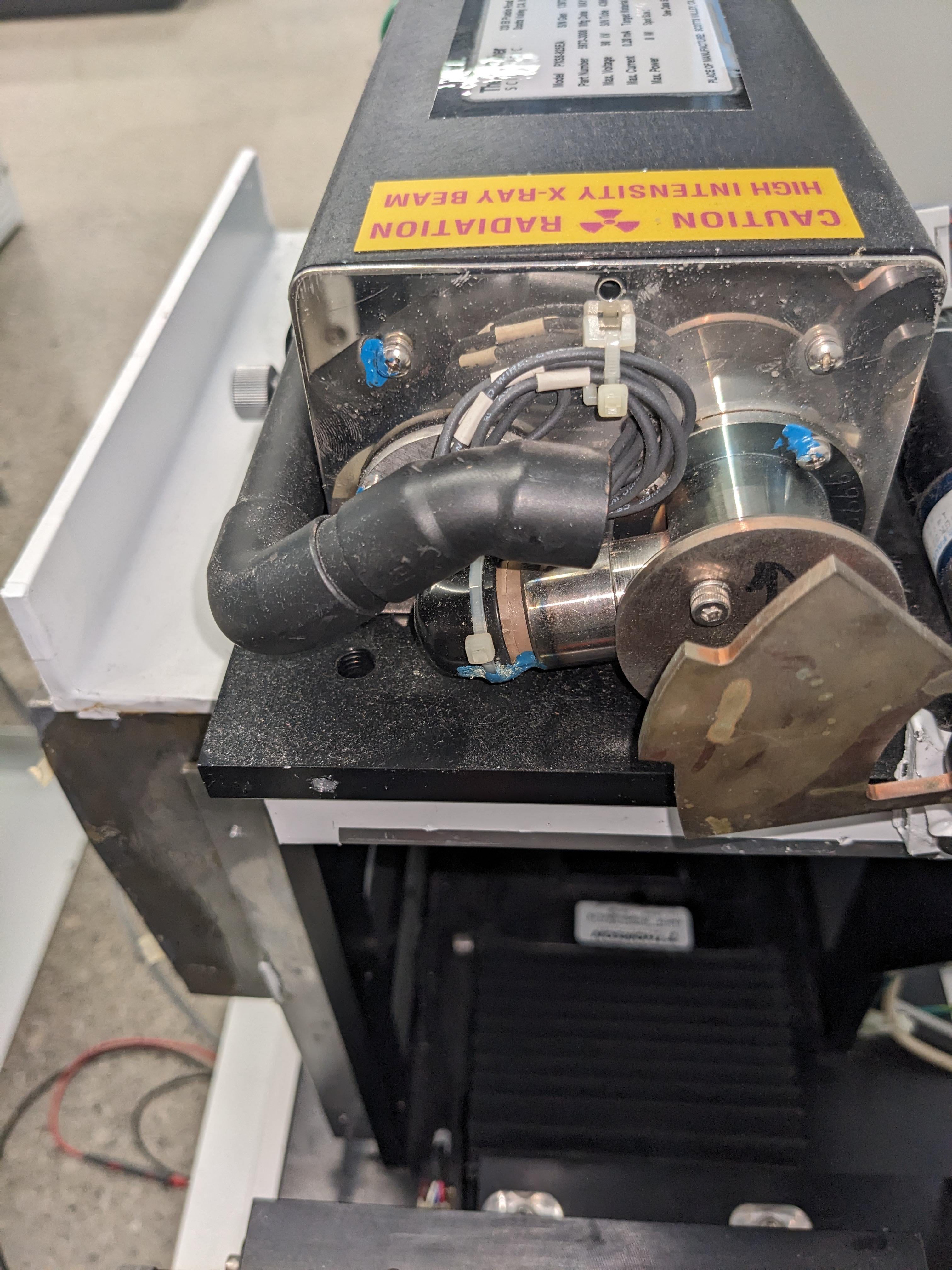
Maybe it's fine...
What's definitely not fine is, peering into the collimator plate, it looks like something is totally fried:
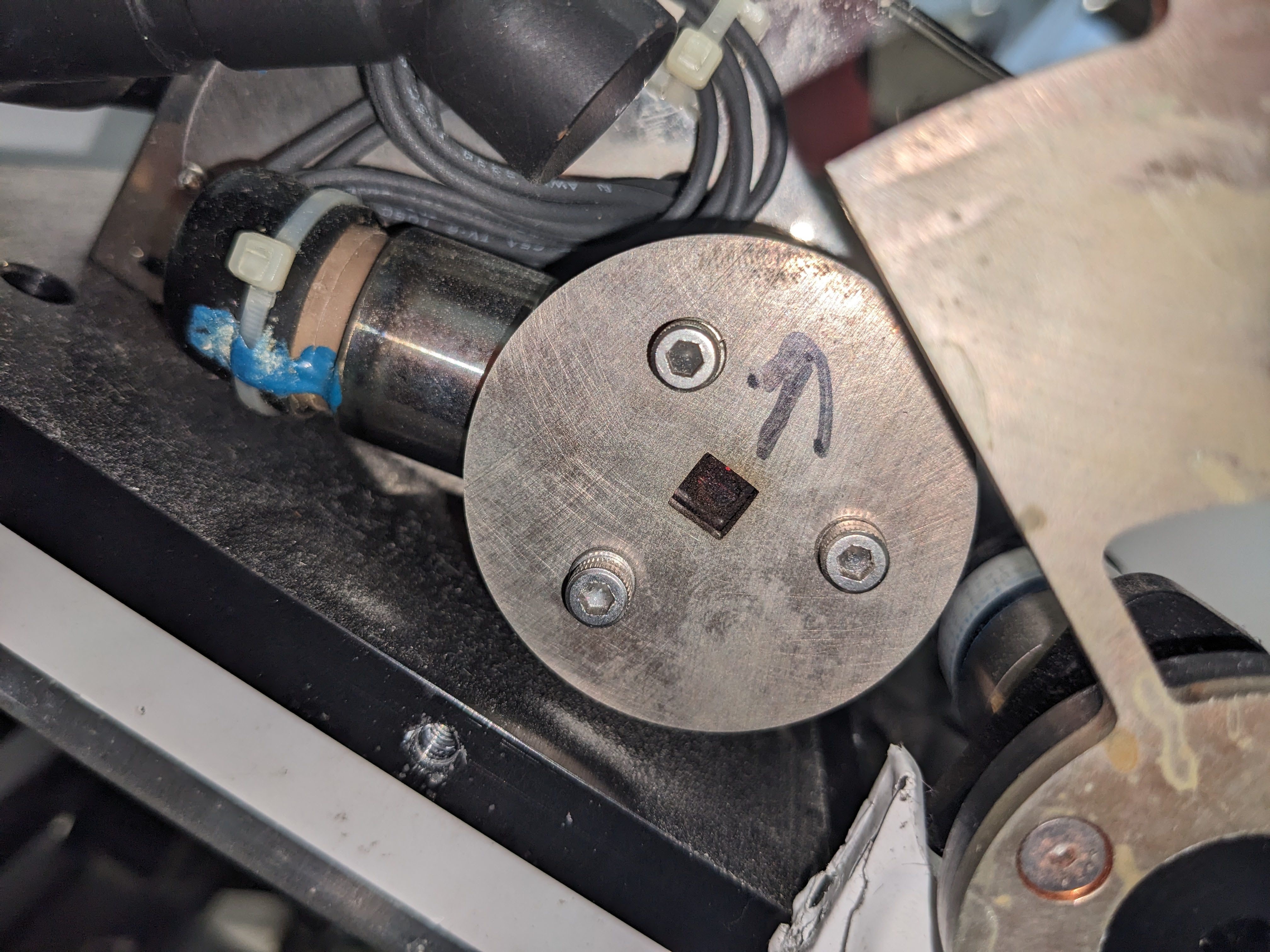

My best guess is that, in between the beryllium tube envelope and the metal collimator plate, the 'lexan window' (as service manual says) has been fried. Somewhere else is a field service upgrade that instructs to remove the window, so maybe it was identified as a cause of concern. Regardless, that is not likely to be the cause of the arcing.
And in any case, a working one will soon take its place.
 Ahron Wayne
Ahron Wayne
Discussions
Become a Hackaday.io Member
Create an account to leave a comment. Already have an account? Log In.